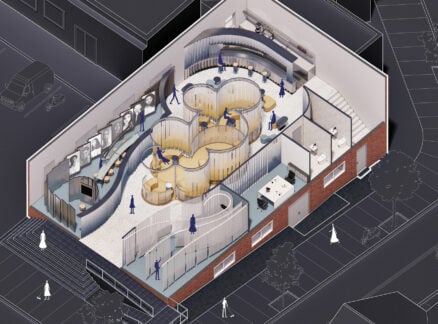August 1, 2003
Obsessive New York
Documenting the Manhattan skyline in unprecedented detail.
What is that tower in Lower Manhattan that looks like the Woolworth Building but isn’t? How tall is the Chrysler Building compared to the skyscrapers of downtown? Which of those two pointy Midtown triangles is the New York Life Insurance Building and which is the Met Life Building?
You don’t need an architectural historian to answer these questions; you just need a very long wall where you can hang John Wagner’s Manhattan skyline portraits. The two 75-inch-wide posters (available at www.grandscapes.biz)—one a view from the Hudson River, the other from the East River—are a heaven of microscopic detail for tower-huggers. Based on thousands of photos Wagner took from the deck of the Circle Line cruise boat and an open-sided airplane, they were drawn on a Macintosh in infinite detail. Wagner, a former newspaper illustrator who lives in Colorado Springs, counted the windows on each building, researched their exact height and volume, and included rooftop water tanks. In terms of pure data, the renderings are more accurate than photographs because Wagner drew every building to the same scale (1 inch equals 250 feet). “The United Nations is drawn to the same scale as the World Financial Center, on the other side of the island,” he explains. “The advantage is that nothing gets small because it’s farther away from you.” The views that result aren’t precisely what you’d see from the rivers, but you can finally eyeball it for yourself: the Chrysler Building really is the second tallest in the city (after the Empire State Building). Annotations above the skyline give building names, addresses, years of completion, architects, and heights.
The project took three years, from 1998 to 2001, and Wagner decided to keep the World Trade Center intact, as it appeared during that time. But he does intend to release updates featuring changes at that site and elsewhere. The man from Colorado isn’t ready to call himself an expert on Manhattan, but he has seen the city in a way no one else had previously imagined. Wagner is the out-of-towner gazing up at the skyscrapers while the rest of us rush past. “That’s one of the advantages of being an outsider,” he says. “I can come in and maybe reveal something of the city a resident wouldn’t see.”





